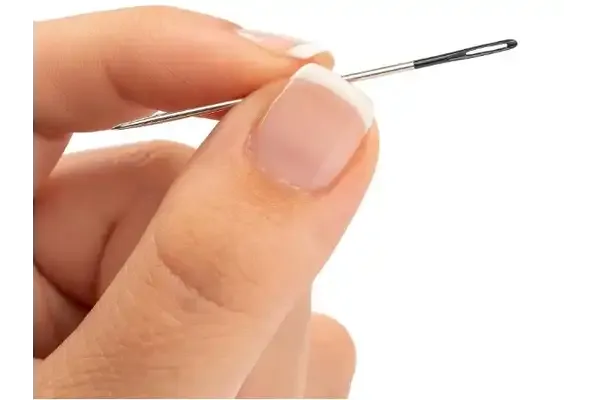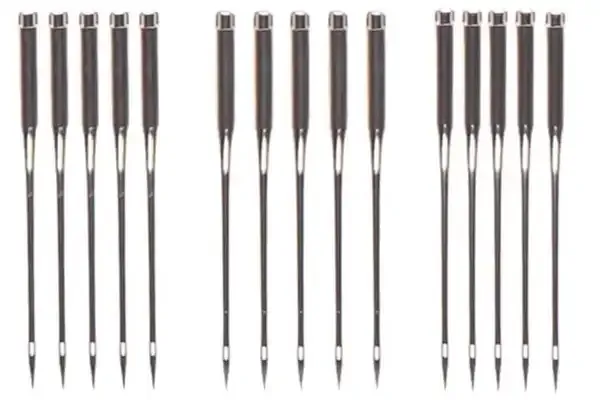Introduction
Sewing needles are indispensable tools in textiles and fashion, bridging fabrics and creative expression. Delving into the history and evolution of sewing needles reveals a narrative of innovation and craftsmanship. Understanding the diverse types of sewing needles and their specific uses empowers crafters to tackle a myriad of projects with precision. The materials used in sewing needle production showcase a blend of tradition and modern technology, contributing to the durability and performance of these essential instruments. Choosing the right sewing needle for a project involves carefully considering various factors, ensuring seamless stitching and professional results. Moreover, implementing proper maintenance and care practices prolongs the lifespan of sewing needles, allowing for continued creativity and flawless needlework.
History and Evolution of Sewing Needles
Sewing needles have been around longer than that ancient candy bar stuck between your couch cushions. Archaeological finds suggest that early humans used bone, ivory, or wood needles for sewing tasks as far back as the Upper Paleolithic period. So, basically, our ancestors were stitching it up even before the invention of pizza delivery.
Fast forward to the Industrial Revolution, where metal manufacturing techniques got a serious upgrade. This led to the production of mass-produced, standardized sewing needles – making sewing faster and more efficient than waiting for your Wi-Fi to reconnect. Nowadays, we have a needle for every stitch, whether you're fixing a popped button or creating a masterpiece.
Types of Sewing Needles and Their Uses
i. Hand Sewing Needles
Hand-sewing needles are like the unsung heroes of the sewing world. From darners for mending socks to sharps for delicate fabrics, these trusty needles are like the duct tape of the sewing toolkit – they can fix anything, except maybe your questionable fashion choices.
ii. Machine Sewing Needles
Machine sewing needles are the powerhouse players of the sewing game. With types like universal, ballpoint, and stretch needles, they're ready to tackle any fabric you throw at them. Just remember, using the wrong needle in your sewing machine is like trying to eat soup with a fork – it's not going to end well.
iii. Specialty Needles for Embroidery, Quilting, and Leatherwork
Embroidery, quilting, and leatherwork needles are like the cool kids of the sewing needle world. They have unique designs tailored to specific tasks, whether you're adding intricate designs to fabric or hand-stitching leather goods.
Materials Used in Sewing Needle Production
i. Traditional Materials like Steel and Nickel
Steel and nickel have been the go-to materials for sewing needles forever (or at least since your grandma's time). Durable, strong, and rust-resistant, these materials are like the Clint Eastwood of needle production – they can handle any sewing challenge with a no-nonsense attitude.
ii. Specialized Materials for Durability and Performance
Innovations in needle technology have brought us specialized materials like titanium and ceramic coatings. These bad boys offer superior strength, reduced friction, and longer needle life – basically, they're the superhero capes of the sewing needle world. So, next time you're stitching up a storm, remember that your needle might be tougher than your last breakup.
How to Choose the Right Sewing Needle for Your Project
i. Consideration Factors: Fabric Type, Thread Weight, and Stitch Type
Choosing the right sewing needle is like picking the perfect avocado – it requires a delicate touch and a keen eye. Consider factors like fabric type (cotton, denim, knit), thread weight (thin, thick), and stitch type (straight, zigzag) to match the needle to your project like a sewing genius.
ii. Matching Needle Types to Sewing Machines
Just like peanut butter needs jelly, sewing machines need the right needle to work their magic. Different machines require specific needle types to prevent thread breakage, skipped stitches, and other sewing nightmares. So, before you start sewing, make sure your needle and machine are a match made in stitching heaven.
Maintenance and Care Tips for Sewing Needles
Are you tired of threading the needle when it's all bent out of shape? Fear not, my fellow sewing enthusiasts! Taking care of your sewing needles is as important as picking the perfect thread color. Here are a few tips to keep your needles in tip-top shape and your projects running smoothly.
i. Cleaning and Storing Needles Properly
First things first, let’s talk about hygiene. No, not your own – your needle's! After all, no needle wants to be covered in lint and fabric residue. Give your needles a little spa day by gently wiping them with a soft cloth soaked in rubbing alcohol or sewing machine oil. This will help remove any gunk and keep them sharp and ready for action.
When it comes to storage, be a needle's best friend and keep them in a dedicated needle case or container. Say no to tossing them in a tangled mess with your threads - your needles deserve better, and so do your fingers!
ii. When to Replace Needles and Signs of Wear
Just like your favorite pair of jeans, sewing needles also have a shelf life. If you notice skipped stitches, snagged threads, or strange noises coming from your machine, it might be time to bid adieu to your old needle. Inspect your needle regularly for signs of wear, such as bending, dull tips, or visible nicks.
Conclusion
Sewing needles stand as humble yet vital tools in the world of crafting and design. From their ancient origins to the specialized needles of today, they have played an integral role in shaping the art of sewing. By understanding the history, types, materials, selection criteria, and maintenance tips surrounding sewing needles, crafters can elevate their sewing experience and achieve impeccable results. Embracing the artistry and practicality of sewing needles opens up a world of creative possibilities, making every stitch a testament to precision and passion.











0 Comments